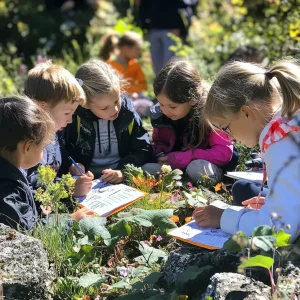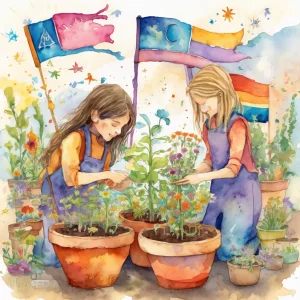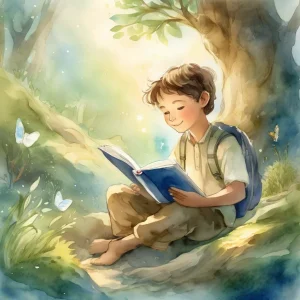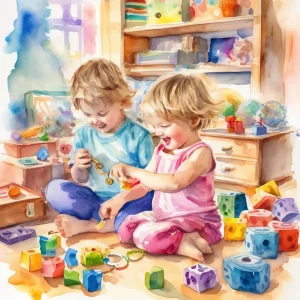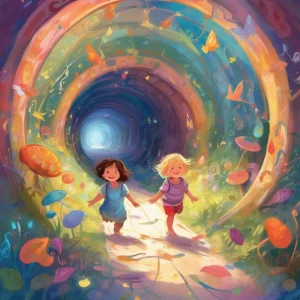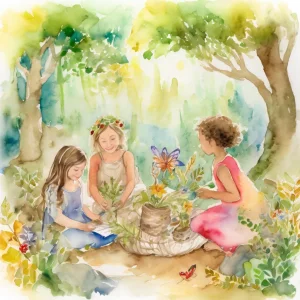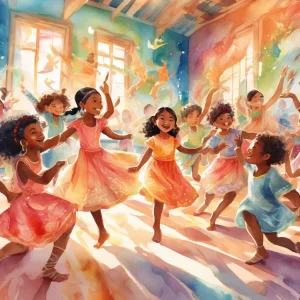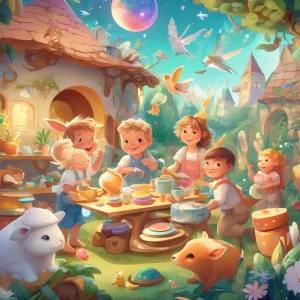Activity
Similar Activities
Nature Quest: Explore, Learn, and Respect
Children’s Age: 10–15 years
Activity Duration: 0.5 – 1 hours
The Nature Scavenger Hunt activity is designed to help children aged 11 to 15 develop morals, academic abilities, and a love for nature. Prepare by gathering supplies like lists, p…
Activity Duration: 0.5 – 1 hours
Whispers of the Blossoming Earth Journeys
Children’s Age: 11–15 years
Activity Duration: 50 – 55 minutes
Embark on the "Around the World Planting Adventure," a gardening activity designed for children aged 11 to 15. Through planting seeds from different countries, kids will learn abou…
Activity Duration: 50 – 55 minutes
Enchanted Tales: Storytime Yoga Adventure
Children’s Age: 2–2.5 years
Activity Duration: 5 – 15 minutes
"Storytime Yoga Adventure" is a creative activity that merges storytelling with yoga to nurture self-care abilities, improve listening skills, and promote physical movement in chil…
Activity Duration: 5 – 15 minutes
Nature's Tongues: Exploring Nature in Different Languages
Children’s Age: 4–6 years
Activity Duration: 15 – 20 minutes
Explore Nature in Different Languages is an engaging activity that boosts children's language and academic skills by immersing them in nature through multiple languages. Children w…
Activity Duration: 15 – 20 minutes
Enchanted Melodies: Musical Rhyme Relay Adventure
Children’s Age: 3–4 years
Activity Duration: 15 – 20 minutes
Engage children aged 36 to 48 months in the Musical Rhyme Relay, a fun activity promoting adaptive development and communication skills. Set up a relay course with cones, musical i…
Activity Duration: 15 – 20 minutes
Sensory Sound Box Exploration: A Musical Adventure
Children’s Age: 1–1.5 years
Activity Duration: 5 – 20 minutes
An engaging activity involving sensory exploration of sound using a variety of household items.
Activity Duration: 5 – 20 minutes
Enchanted Melodies: The Musical Tunnel Crawl
Children’s Age: 1–1.5 years
Activity Duration: 5 minutes
An engaging tunnel crawling activity with musical instruments for children aged 13-17 months.
Activity Duration: 5 minutes
Enchanted Forest Tales: Nature Play Theater
Children’s Age: 4–6 years
Activity Duration: 15 – 25 minutes
Engage children aged 48 to 72 months in the "Nature Play Theater" activity, fostering communication skills and ecological awareness. Set up an outdoor performance area with natural…
Activity Duration: 15 – 25 minutes
Ecosystem Adventure Board Game - Nature's Quest
Children’s Age: 7–9 years
Activity Duration: 10 – 25 minutes
An interactive board game where children explore and learn about ecosystems through challenges and tasks.
Activity Duration: 10 – 25 minutes
Musical Freeze Painting: A Creative Dance Adventure
Children’s Age: 3 years
Activity Duration: 10 – 20 minutes
An engaging activity combining painting with musical freeze dance to promote creativity and play skills.
Activity Duration: 10 – 20 minutes
Sensory Music-Making Session: Sound Story Drawing Adventure
Children’s Age: 2–2.5 years
Activity Duration: 5 – 20 minutes
A sensory music-making activity using household items to enhance sensory development and introduce children to the world of music.
Activity Duration: 5 – 20 minutes




